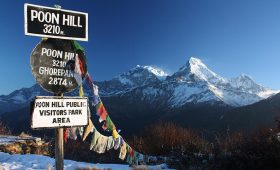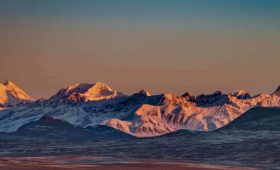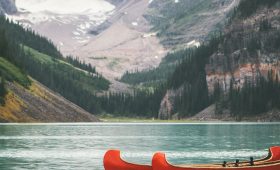Introduction
When we think of adventure, one destination often stands out above the rest: Mt. Everest. As the tallest mountain in the world, standing at an awe-inspiring 8,848 meters, Everest is not just a peak but a symbol of human perseverance, determination, and the ultimate challenge. Whether you’re an experienced mountaineer or an adventurous traveler, a journey to Mt. Everest offers an experience like no other.
The Allure of Everest
Mt. Everest, known as Sagarmatha in Nepali and Chomolungma in Tibetan, has captivated explorers and adventurers for centuries. The allure of standing at the top of the world is undeniable, but the journey to its base is equally breathtaking. Trekking to Everest Base Camp (EBC) allows travelers to experience the unique culture, stunning landscapes, and the incredible spirit of the Himalayas.
Planning Your Trip
1. Best Time to Visit:
- The best times to trek to Everest Base Camp are pre-monsoon (March to May) and post-monsoon (late September to November). During these periods, the weather is relatively stable, and the views are spectacular.
2. Required Permits:
- You’ll need two permits: the Sagarmatha National Park Entry Permit and the Khumbu Pasang Lhamu Rural Municipality Permit. These can be obtained in Kathmandu or at the entrance to the park.
3. Physical Preparation:
- The trek to Everest Base Camp is challenging but achievable with proper preparation. Regular cardio exercises, strength training, and acclimatization hikes will help you prepare for the trek.
The Journey Begins: Kathmandu to Lukla
Your adventure begins with a thrilling flight from Kathmandu to Lukla, often regarded as one of the most exciting flights in the world. The Lukla Airport, perched on a mountainside, offers a dramatic introduction to the Himalayas.
Trekking Through the Khumbu Valley
1. Phakding:
- From Lukla, the trek descends to Phakding, a small village situated along the Dudh Kosi River. The trail is filled with the sights and sounds of the Khumbu region, including prayer wheels, suspension bridges, and the warm hospitality of the Sherpa people.
2. Namche Bazaar:
- The bustling Sherpa town of Namche Bazaar is the next major stop. Situated at 3,440 meters, Namche is the perfect place for acclimatization. Take your time to explore the local markets, visit the Sherpa Museum, and enjoy panoramic views of Everest and surrounding peaks.
3. Tengboche:
- The trek from Namche to Tengboche is one of the most scenic sections of the journey. Tengboche Monastery, the largest in the Khumbu region, offers spiritual solace and stunning views of Everest, Lhotse, and Ama Dablam.
4. Dingboche and Lobuche:
- As you ascend higher, the landscapes become more rugged and the air thinner. The villages of Dingboche and Lobuche provide essential rest stops and acclimatization opportunities.
5. Gorak Shep and Everest Base Camp:
- The final push takes you to Gorak Shep, the last stop before Everest Base Camp. From here, you’ll trek across glacial moraines to reach the iconic Base Camp, where climbers prepare for their ascent to the summit. Standing at EBC, surrounded by towering peaks and the Khumbu Icefall, is a humbling and exhilarating experience.
Experiencing the Culture
The Everest region is not just about the mountains; it’s also about the people. The Sherpa community, with their rich culture and traditions, adds a unique dimension to the trek. Engage with the locals, learn about their way of life, and immerse yourself in the spiritual atmosphere of the monasteries along the route.
Safety and Acclimatization
Altitude sickness is a serious concern when trekking to Everest Base Camp. It’s crucial to take your time, hydrate well, and listen to your body. Acclimatization days, typically in Namche Bazaar and Dingboche, are essential to ensure your body adjusts to the high altitude.
Conclusion
A journey to Mt. Everest is more than just a trek; it’s a transformative experience. The breathtaking landscapes, the rich culture of the Sherpa people, and the sense of accomplishment upon reaching Everest Base Camp make it a journey of a lifetime. Whether you’re seeking adventure, spiritual growth, or simply a break from the mundane, Everest has something profound to offer. So, lace up your hiking boots, pack your backpack, and set off on an adventure that will leave you with memories to last a lifetime.




